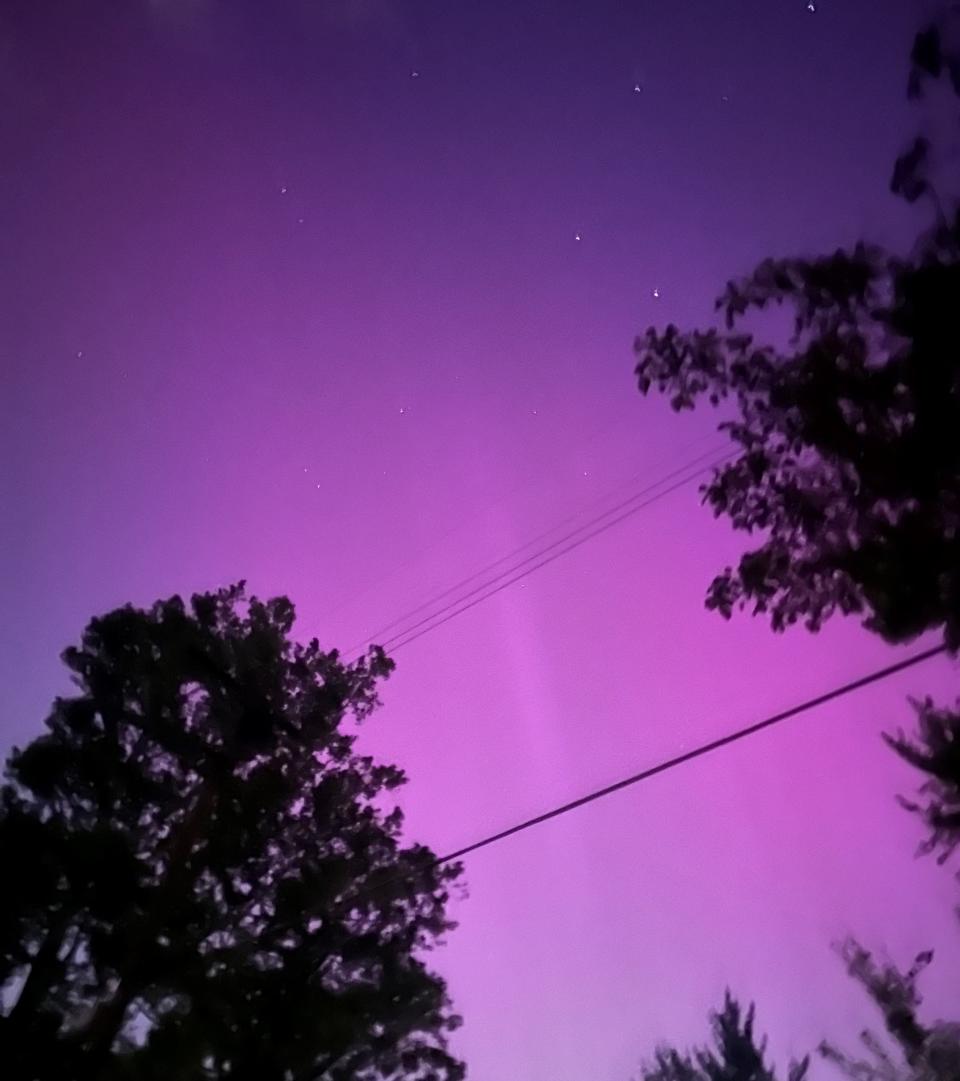Will northern lights be seen in Ohio on June 4? New solar storm could bring aurora borealis
Another solar storm is expected to impact the Earth today. Will it bring the northern lights back to Ohio?
Here's what to know.
Geomagnetic storm watch issued for June 4
The Space Weather Prediction Center has issued a minor (level G1) geomagnetic storm watch for June 4. According to the center, a coronal mass ejection left the sun on June 1 and is expected to begin its impact with the Earth's atmosphere today.
Will the northern lights be visible in Ohio?
It's unlikely the aurora borealis will be visible in Ohio from today's storm. According to the National Oceanic and Atmospheric Administrations' rating system for geomagnetic storms, a minor G1 storm will expand the northern lights beyond their usual haunts of Alaska and Northern Canada. However, the aurora is usually visible only from high latitudes, such as Northern Michigan and Maine, during such storms.
To contrast, the solar storms on May 10, when the aurora borealis was visible across Ohio and the United States, was the most extreme, a G5.

When will the northern lights be visible again? Aurora could appear in June, possibly June 6
The northern lights could reappear over the United States in June, as the sun's rotation brings the sunspot responsible for the powerful May 10 solar storms around to face the Earth again, according to Live Science.
That sunspot, roughly 15 times the size of the Earth, will be pointed directly at the planet during the new moon on June 6. According to Live Science, that's when the Earth is most likely to be hit by solar weather, potentially pushing the aurora borealis south, into the states and beyond in the days before and after the alignment.
What is the aurora borealis? How do the northern lights work?
Auroras are ribbons of light weaving across Earth's northern or southern polar regions, according to NASA. They are caused by magnetic storms that have been triggered by solar activity, such as solar flares or coronal mass ejections. Energetic charged particles from these events are carried away from the sun by the solar wind.
These energized particles hit the atmosphere at 45 million mph and are redirected to the poles by the earth's magnetic field, according to Space.com, creating the light show.
During major geomagnetic storms, the auroras expand away from the poles and can be seen over some parts of the United States, according to the NOAA.
What is a coronal mass ejection?
NASA describes coronal mass ejections as "huge bubbles of coronal plasma threaded by intense magnetic field lines that are ejected from the sun over the course of several hours." The Akron Beacon Journal reports that the space agency says they often look like "huge, twisted rope" and can occur with solar flares, or explosions on the sun's surface.
NOAA offers aurora dashboard
If you're curious about the latest forecast for the aurora, the NOAA has a tool for that. The Aurora Dashboard offers a visual, animated prediction of where the aurora might be seen in the next few minutes as well as the following day.
For those interested in a deeper dive, the site offers visual examples of how the magnitude of geomagnetic storms affect the aurora, as well as links to learn more about the science behind auroras.
This article originally appeared on Record-Courier: Solar storm targets Earth. Will Ohio see the northern lights on June 4?

